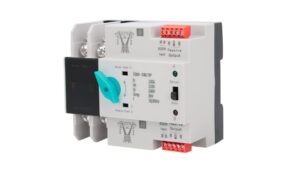Generating electricity from solar power is one of the most popular and eco-friendly ways to generate electricity. That leaves sunlight, but how do we turn sunlight into electrical power? That’s where solar photovoltaic (PV) modules and arrays come in. In the following guide, we will explain the calculation and design of solar photovoltaic modules & array.
What is a Solar Photovoltaic Module?

The solar cell cluster made together to generate electricity is mentioned as a solar photovoltaic integrated (PV) module. Typically only a few watts, between 0.1 to 3 watts, will be generated from a single solar cell, to which its size depends. If we want to generate more power, we want to connect multiple cells in series or in parallel. This solar cell interconnected set is a PV module.
Why We Need Multiple Solar Cells
Most appliances can’t be powered by the energy output of one solar cell. For example, you can only get 0.3 volts out of a single solar cell. Even if it is 0.3 V, if we connect 10 of these cells in series we will have 3 V. That’s because when the cells are in series, the voltage from each adds up.
However, what if we need more current than voltage? If that is the case, we wire solar cells in parallel. For a parallel connection, current increases, while the voltage stays the same. For instance, if each cell produces 2 amps of current, hooking five such cells in parallel will yield 2A x 5 = 10 A of current.
Understanding PV Module Design
In order to design a PV module, we will need to compute the numbers of solar cells we need to connect in series and parallel to obtain the voltage and current we need. It hinges on conditions like each cell’s voltage, the amount of power we need, and what kind of battery we want to charge.
Example Calculation:
Let’s say we want to design a PV module to charge a 12V battery. The solar cells we are using have:
- Open-circuit voltage (VOC): 0.89V
- Voltage at maximum power (VM): 0.79V
Step 1: Calculate Voltage Drop
The best performance of solar cells are obtained at a standard test condition (STC) of 25°C and 1000 W/m² sunlight. The temperature, however, may rise above 25C, which lowers the cells’ voltage. A temperature rise by 1°C decreases the voltage by 0.002V.
Under a temperature of increase 60°C, the voltage drop will be: The voltage drop is equal to (60°c – 25°c) × 0.002 v = 0.07v.
Step 2: Calculate Voltage at Operating Condition
Voltage at operating condition = VM – Voltage drop = 0.79V – 0.07V = 0.72V
Step 3: Calculate Number of Cells in Series
To charge a 12V battery, the module voltage should be around 15V. We calculate the number of cells required using: Number of cells = Required voltage / Voltage per cell = 15V / 0.72V ≈ 21 cells
Step 4: Connecting Cells in Series and Parallel
- If you would like 15V, connect 21 cells in series.
- If we want more current, add another series group in parallel.
Measuring PV Module Parameters
In order for a PV module to perform properly, it is important to measure its voltage and current. The two key measurements are:
- Open-circuit voltage (VOC): When there is no load to the module, this is the voltage.
- Short-circuit current (ISC): This is current when the module terminals are driven directly.
How to Measure VOC and ISC
- To measure VOC use a multimeter on voltage mode.
- For ISC measurement, use the same multimeter set in current mode.
- Be sure to connect the probes the right way around (positive to positive, negative to negative).
Boosting PV Module Efficiency
We can boost PV module efficiency through two methods:
- The installation of bypass diodes serves to protect the cells from destructive shading conditions.
- Blocking diodes protect PV modules from receiving power back from batteries during the night.
How PV Arrays Work
If several PV modules are tied together, a PV array is formed. Solar power plants utilize PV arrays to generate even more power and large solar setups.
- Voltage is increased in series module connection.
- Current increases in parallel connection of modules.
Conclusion
When designing a solar photovoltaic module and array it is all about joining solar cells in the right way to meet both the required voltage and current. Understanding how to calculate the number of cells, their arrangement, and measurement of their performance, can help you create an efficient solar power system for home or any other application.
Read More – MPPT Solar Charge Controller: Everything You Need to Know


